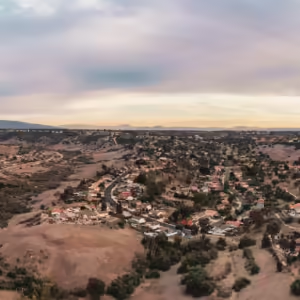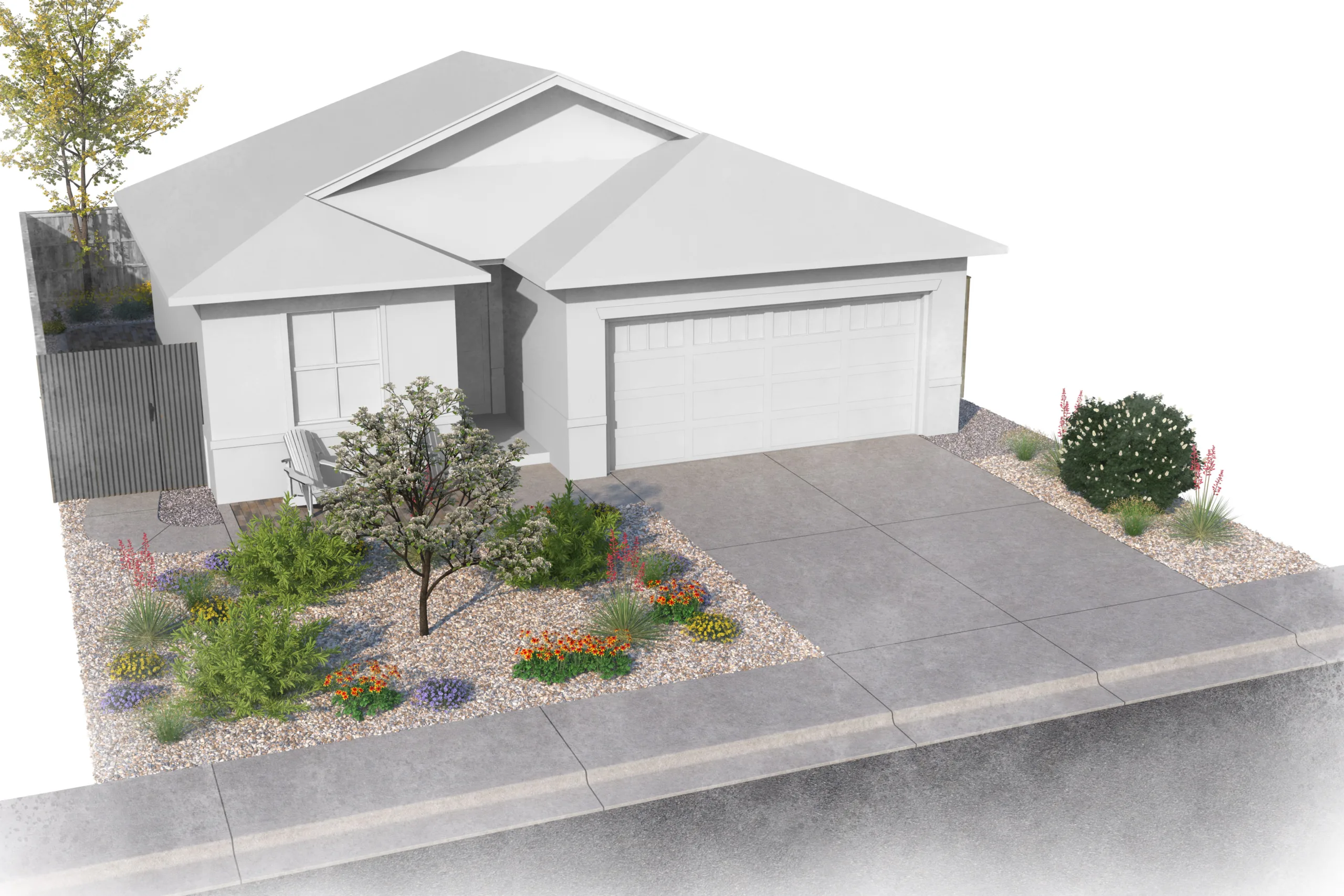
Crossover landscaping can enhance wildfire resistance and save water
Wildfire disasters in the United States have destroyed more than 100,000 homes since 2005, resulting in growing attention to “home hardening” solutions that improve fire resistance. Consistently, wildfire professionals are recommending changes to home landscaping as a cost-effective way to improve defensible space and reduce losses.
Many wildfire-prone communities also face droughts and water shortages, leading people to seek landscaping solutions that improve wildfire safety, save water, and boost curb appeal. This is the case across the western United States and beyond, where both wildfires and droughts have become more frequent, intense, and prolonged. According to national data, thousands of communities are confronting both drought and wildfire risks simultaneously, with Montana, Oklahoma, Utah, Arizona, New Mexico, and Texas ranking highest for both hazards.
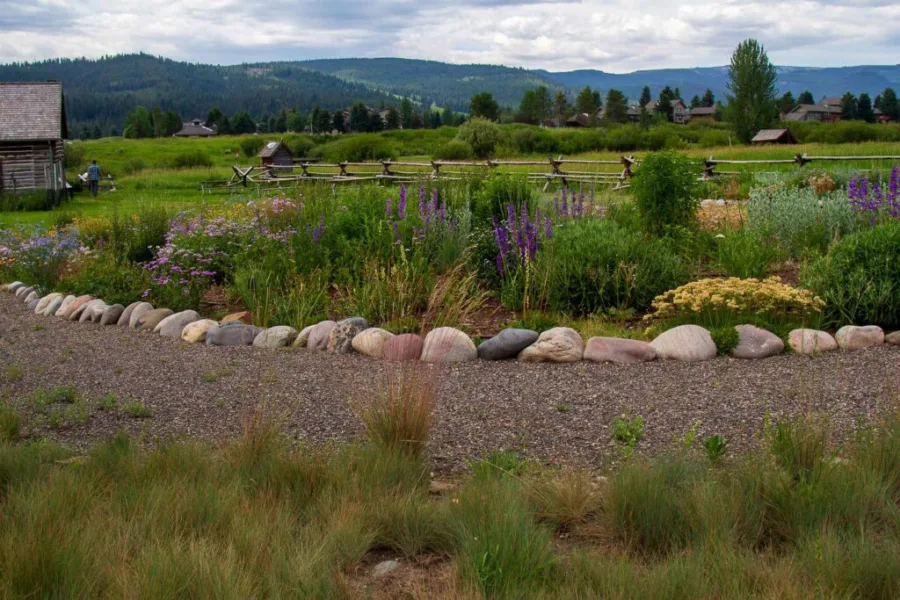
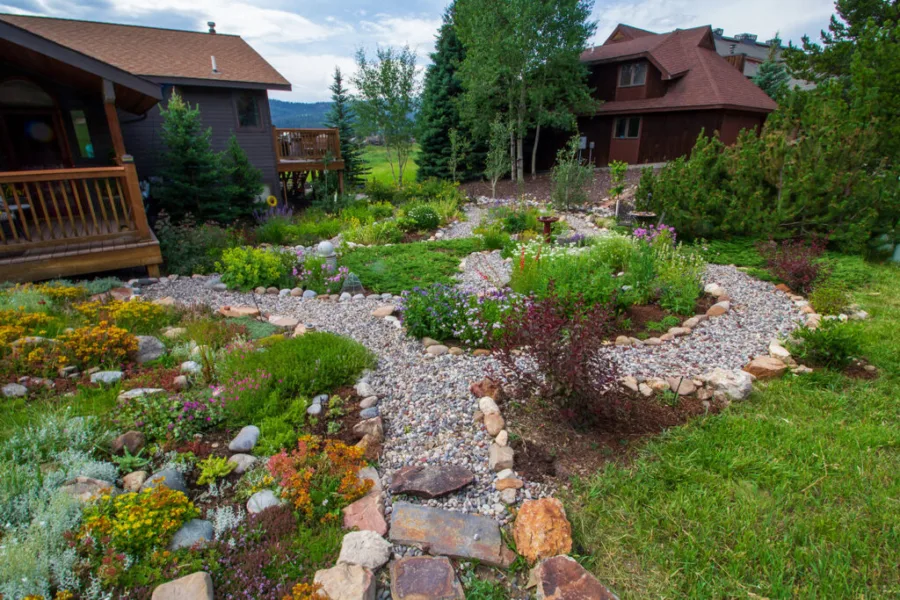
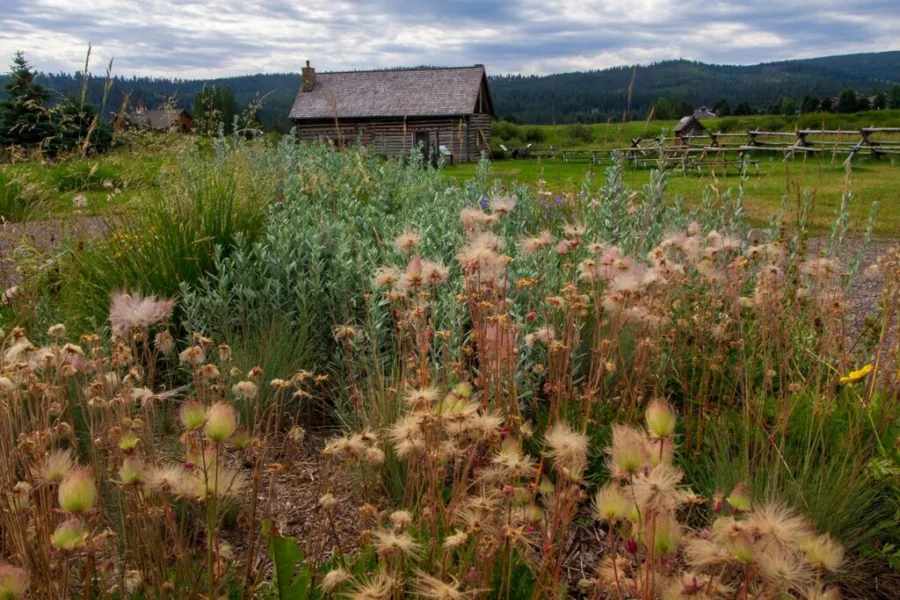
Fire-safe, water-wise landscaping in Big Sky, Montana. Photo: Alpenscapes
Crossover landscaping requires a customized approach
Admittedly, not all low-water plants are useful for reducing wildfire risk. Some drought-resistant plants like juniper and mesquite can increase susceptibility to fire. Conversely, maintaining some fire-resistant but water-loving plants such as aspen might miss water conservation goals. However, to create a more adaptable environment, there are plant choices and landscape designs that “cross over” to meet both fire- and water-wise objectives.
For instance, broad-leafed deciduous plants that don’t require a lot of water to stay healthy can reduce heat and might even be able to serve as a firebreak for ground or canopy fires. Plants that have deep roots and heavy leaves tend to be both drought tolerant and fire resistant. Replacing lawns with hardscapes such as rock or porous paving can be advantageous for both fire and water goals while decreasing maintenance costs.
Plants that can survive drought and fire damage provide other benefits. Their root systems help limit erosion, which in turn can protect water supplies from sediment and debris that enter the system following a fire. Plants that are native to the area might even thrive after wildfire, keeping invasive species at bay and allowing ecosystems to recover.
Five steps to building a crossover landscape
Five principles can be applied to building a crossover landscape.

- Placement matters more than plants. All plants can burn in the right circumstances. Above all, pay attention to planting location and arrangement. Avoid planting next to structures and leave a five-foot buffer around your home if possible. Buffers can be stone walkways or paths. Conserve water by reducing landscaped surface area.
- Choose double-duty plants. A number of plants and trees have properties that reduce fire risk and conserve water, such as deep root systems and heavy or waxy leaves. Many choices will depend on local geography and growing conditions.
- Groundcover beats grass. Limiting lawn space is an easy way to conserve water. Replacing those areas with a high-moisture groundcover can also provide a barrier in case of fire. Drought- and heat-resistant groundcovers use less water, are easier to maintain, prevent erosion, and work especially well on areas such as steep slopes and hills.
- Rock the surroundings. Similar to groundcover, properly located gravel beds and other hardscapes can create defensible space around a home while still providing conservation-friendly effects such as soil moisture retention and less need for water overall.
- Go native. Designing landscapes made up of predominantly native species can reduce water use, resist wildfire, and support local wildlife. Even when these plants are exposed to fire or drought, they’re more likely to regrow afterwards.
In some cases, local incentives can help homeowners implement some of these principles. Investigate whether your municipalities and/or local utilities offer a rebate program or other incentives for crossover landscaping. Colorado Springs Utilities, for example, offers property owners $1 per square foot of converted landscaping. Also, seek out free water-use and fire mitigation audits offered by local utilities and fire departments.
The path forward for local governments and utilities
Community leaders will increasingly be called on to address drought and wildfire threats. Embracing crossover landscapes in codes and practice is a simple way to ensure widespread adoption that protects communities.

Landscaping codes that reduce water use and have the additional crossover benefits of fire resistance are becoming more appealing to drought-prone communities that are looking to reduce wildfire risk in residential areas. Particularly in areas where codes that regulate housing construction are unpopular, landscape codes can be an important step toward reducing fire risk and encouraging water conservation.
While landscaping codes can raise concerns about costs and aesthetics, people are finding that the benefits outweigh the costs. For example, durability and longer-term maintenance savings can make up for initial investments. Still, coordination is needed with residents and homeowner’s associations to ensure that requirements and city ordinances do not conflict. Many are encouraged to find that crossover landscapes do not have to stray far from traditional approaches.
A local water district offers solutions
After the Marshall Fire destroyed 1,084 homes in the Boulder, CO, suburbs in December 2021, local officials wanted to ease the path to rebuilding for scores of homeowners, many of whom lacked the insurance coverage needed to rebuild the homes they lost. Northern Water, the local water district partly responsible for bringing water to more than a million people on Colorado’s Front Range, realized it had a unique role to play as a champion of water conservation and wildfire risk reduction.
Northern Water commissioned six landscaping templates for new homes that used drought- and pollinator-friendly plants and also followed fire-wise principles. The templates are helping homeowners overcome two major barriers to water conservation landscaping – money spent on consultants and knowledge of plant types – while also offering built-in wildfire risk reduction. Northern Water’s templates are rich in detail. They offer estimates of costs and water conservation, as well as lists of plant types recommended for each template, including some options with full lawns.
Beyond municipal government, new crossover landscape recommendations are starting to be adopted by state agencies, utilities, and public-private collaborations. Texas A&M Forest Service publishes guides that feature drought-friendly recommendations alongside recommendations for protecting homes from wildfire. Several nonprofit organizations in Big Sky, MT, have banded together to create Alpenscapes, an initiative that provides resources, education, and support to those interested in fire- and water-wise landscapes. Steamboat Springs, CO, is beginning to update land use codes to address both drought and wildfire.
Subscribe to our newsletter!
Encouraging landscaping that can withstand drought and fire doesn’t have to be difficult, but it does have to allow for flexibility. The success of crossover landscapes will depend on geography, prevailing weather patterns, soil conditions, and numerous other factors—including community resources and priorities.
Crossover landscaping offers a practical, evidence-based approach to reducing wildfire risk while conserving water resources. As hazards intensify, integrating these strategies into community planning and residential design can reduce long-term costs through lower maintenance, improved property protection, and increased resource efficiency.
Additional Resources
- Webinar: Landscaping for water and wildfire webinar and FAQ
This recorded webinar from May 15, 2025 explores how crossover landscaping codes can do double duty to reduce fire risk and encourage water conservation in your community. An FAQ below the video includes answers to some of the questions raised by attendees.


Ryan Handy & Doug Green
ryan@headwaterseconomics.org
doug@headwaterseconomics.org
Ryan Handy and Doug Green are wildfire and land use planning experts who offer risk reduction solutions to communities through Headwaters Economics’ Community Planning Assistance for Wildfire program.

